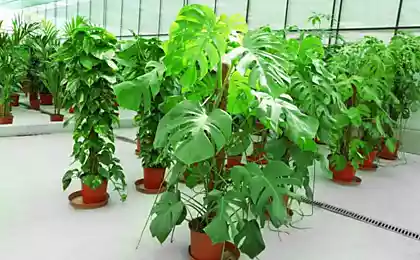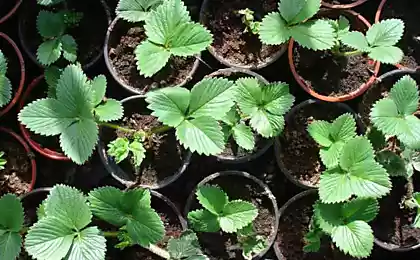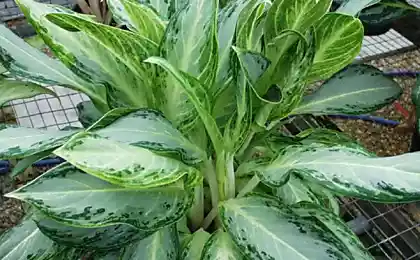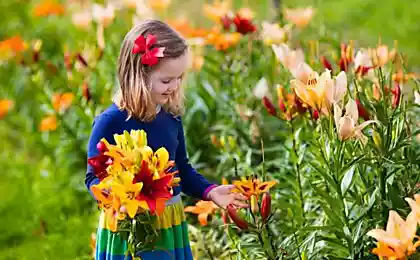717
Monstera in Your home: proper care
Monstera came to our window sills from the forests of South and Central America. The name of the plant comes from the English word monstrum, meaning monster. The name of the plant received thanks to its large and strongly cut leaves, as well as its impressive growth. Agree, the Mature plant is pretty impressive.
Description of the plant
Monstera belongs to the family Araceae, the plant itself is an evergreen vine.
The stems of the plant are thick, tree-climbing, indoors they need good support.
Leaves rather large, strongly cut, additionally, the leaves can have holes of different shapes. The sheet is attached to the stem by a long stalk. Often grown monster with dark green color of leaves, but there are variegated forms. The leaf leathery, with proper care has a glossy surface.
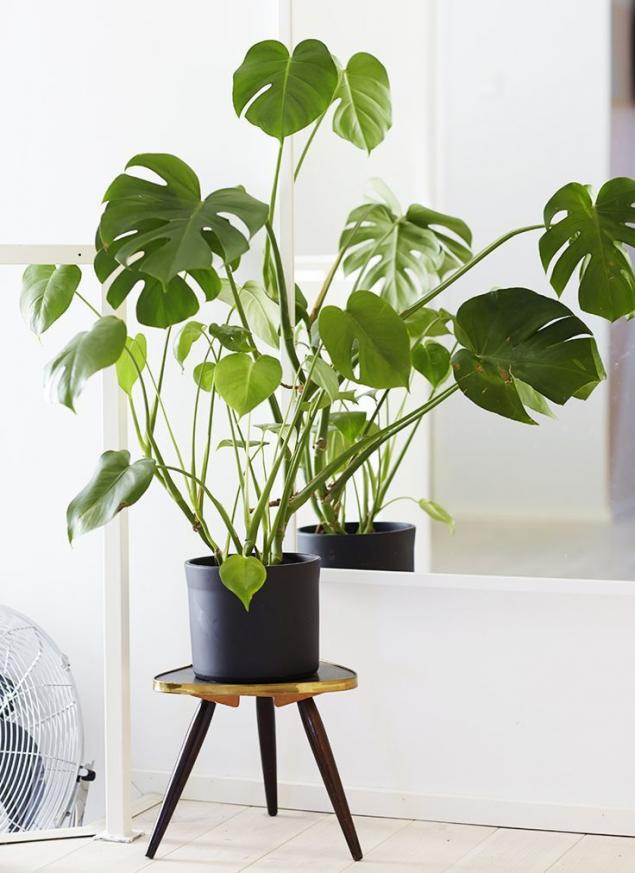
Indoors monstera blooms is quite rare, its flowers resemble white spadix covered by a light green or cream-colored blanket. The fruits ripen throughout the year when the plant withered.
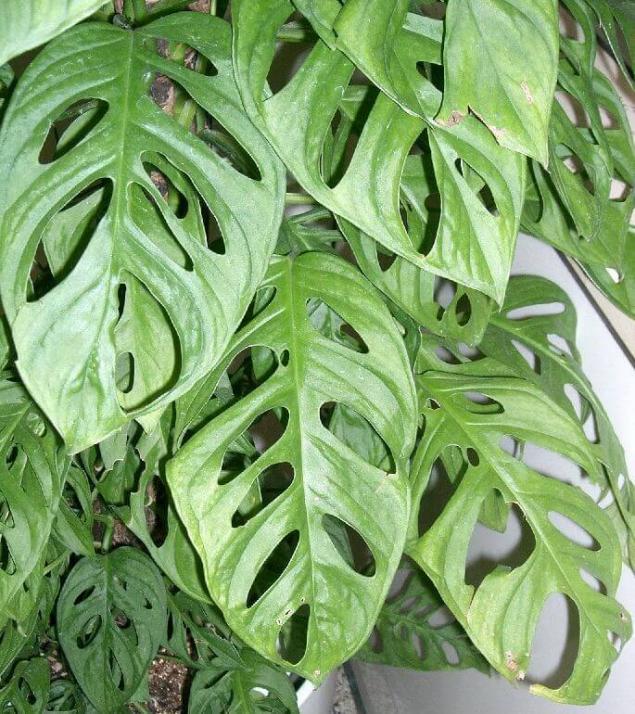
Monstera Adanson
The plant is quite popular in indoor horticulture and all thanks to the simplicity and ease of care. In addition, scientists have proven the fact that the monster ionizes the air in the room where it is located, thus positively affecting the surrounding climate.
Monstera is a popular types of
Monstera Adanson
This plant in natural conditions grows in the rain forests and can grow up to 8 meters in height.
The leaves are thin, ovate, reach a length of from 25 to 55 cm, and in width from 25 to 45 cm.
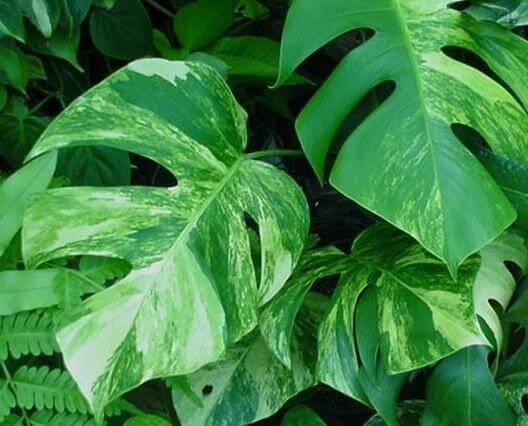
Monstera Borzaga
The whole sheet is dotted with holes of various rounded shapes. When grown as a house of culture flowering occurs rarely. Flowering spadix pale yellow, on rather short peduncle. The size of the flowers can reach 7 to 14 cm in length, and 1 to 2 cm in diameter.
Monstera Borzaga
This kind came to us from the forests of Mexico, like all species, is a vine. The stems are thick, powerful, grow up to a length of 6-8 meters. The leaves are dark green, leathery, reach a diameter of 30-35 cm In the indoor environment does not bloom.
Monstera deliciosa
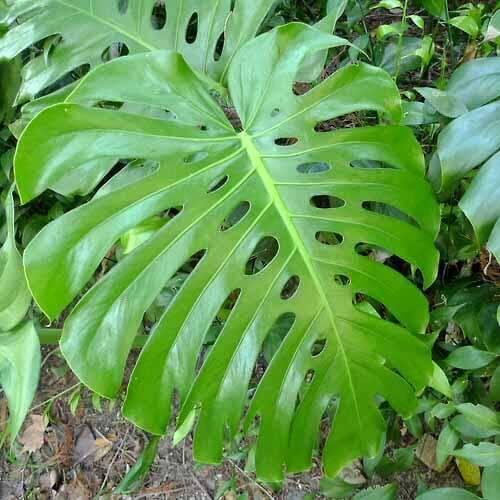
Monstera deliciosa
This species has another name, often a plant called monstera attractive. To us this species come from tropical rain forests located in the mountainous part of Central America. This is perhaps the most popular type of monster that can be found in our homes and offices.
The trunk of the plant is thick quite powerful, in natural conditions reaches a height of about 10-14 meters, in terms of indoor growing can grow from 3 to 5 meters. This species has large heart-shaped leaves that can reach 45 to 60cm in diameter. Young leaves do not have fissures and holes, they, as a rule, neat in shape with a smooth edge. Adult leaves are heavily dissected with multiple round holes.
They feel leathery and with proper care have a glossy Shine. The plant blooms quite often even in the indoor environment.

The flower and maturing the fruit of the monstera delicious
The flower has the shape of a cob, covered by a whitish veil, size 20 to 25 cm in length and from 8 to 20 cm in diameter, the size of the flower depends on the rules of care and the age of the plant.
After the plant bloomed, you need to wait until the fetus is Mature as it's edible, the taste and smell reminiscent of pineapple. The maturation of the fruit takes quite a long time, but do not try unripe fruits, otherwise you can burn your mouth.
Monstera oblique
This species also has a second name – Monstera Crescent.
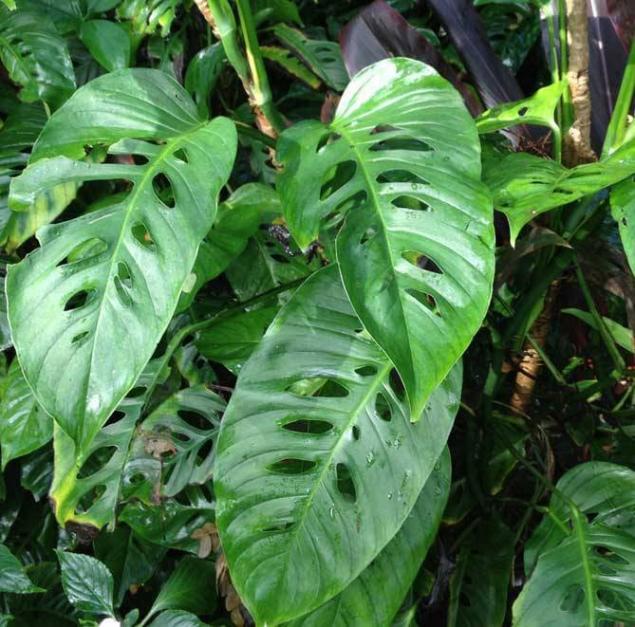
Monstera oblique
These plants are native to Brazil, where they grow in tropical forests. The trunk of plants of this species, as well, and all of the monster powerful and thick. The leaves of monstera oblique differ from previous types, they are oblong-lanceolate, or elliptical shape, the base may be slightly sloped to one side. As the size of the leaves is much less so in length, they rarely grow more than 20cm and a width of not more than 7 cm Inflorescences small, rarely exceed a length of 5 cm.
Monstera punched
This species is also called leaky monster. Leaky monster came to us from the tropics of the American continent. The trunk is thick, powerful, Liana.
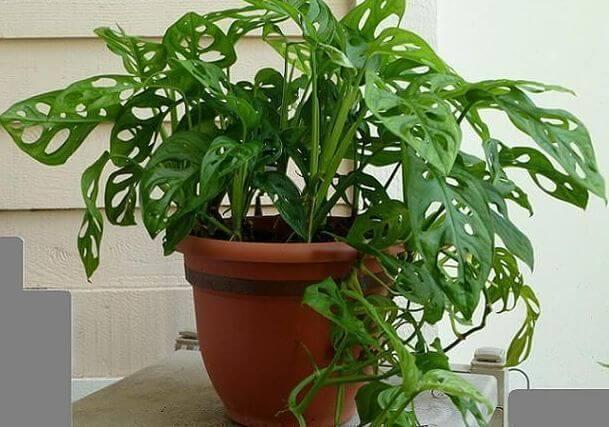
Monstera punched
Leaves jajtsevidnye shape, very large, at length grow about a meter and a width of 30 cm the leaves Themselves at the base of the isosceles is not riddled with holes of various shapes. The flower – head, with a length of about 10 cm, covered nearly twice his size, white blanket
Monstera plant care
The plant is unpretentious in care, but all the same there are certain rules in which you can extend and improve the life of your indoor pet.
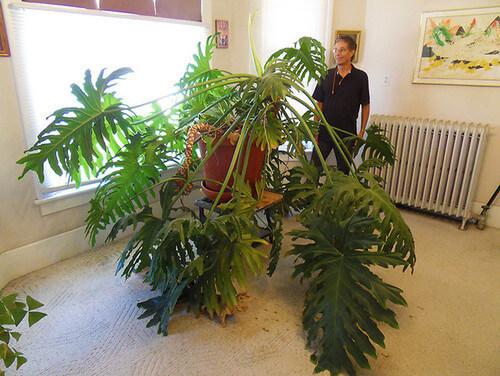
Lighting mode and location
As a plant native to the tropics, for it is the best light is bright but diffused light, and the best seat in the house the sills or just a place near Windows with East or West side. If you have no opportunity or outlet on the West or East side, suitable, sure, South or North, only the South side should take care of creating diffused light, and on the North side, the plant will have to dosvechivat. The quality of light affects the growth of leaves of the plant, if it will be enough light, the leaves will be small and inexpressive.
You should know that the plant does not respond well to drafts and frequent moving from place to place, without much need to even turn the pot is not recommended.
Temperature mode
The ideal temperature for this plant can be considered a temperature in the range 20-25⁰С.
In winter, a short-term lowering the temperature to 10⁰С, but the optimum temperature for the maintenance of the plants in this period is still mode in the range of from 16 to 18⁰С. under the conditions of a temperature mode, the plant will delight you with large and ornate leaves.
Watering
In the period of active growth and development of plants in spring and summer abundant watering is recommended, it is produced as the drying of the upper soil layer, warm soft water pooled. In autumn and winter, watering should be slightly reduced, but do not allow drying earthen coma because the plant may respond by dropping leaves. To prevent waterlogging and water stagnation so it is not necessary, as in this case, the monster can get sick with root rot, that will affect its appearance.
Humidity
The plant requires humid air, as in the tropics, where does it come from a humid climate. So you need to periodically spraying and wipe the leaves clean with a damp cloth. Spraying, and watering produce to defend water at room temperature.
Feeding and fertilizer
Like most houseplants monstera needs regular fertilizing, this procedure prevents the slowdown of growth and impoverishment of the soil. Feeding produce any complex fertilizer every two weeks.
Pruning
Monstera actually, trim is not accepted, but if you notice that the plant slowed the growth, you can trim the top. Thus you stimulate the growth of side shoots
Care for aerial roots
Quite often the monster you can see aerial roots growing from almost under every leaf, and inexperienced growers are in no hurry to remove them, believing that it spoils the appearance of the plants. But this, is just to do and be. Aerial roots just need for additional power plants. If they can't reach the soil of the pot in which a plant grows they just need to wrap damp moss, and moisten it from time to time. You can just periodically spray them with a solution of nutrients or a weak solution of complete fertilizer.
The ground for monstera.
To transplant this plant, you can buy a ready-made substrate, or cook it yourself. The substrate for the monstera should consist of three parts peat, two parts humus and one part sand.
Transplant plants
From time to time, monstera needs a transplant so young plants up to the age of three years should be transplanted every year, over 4 times in two years, and plants older than 5-6 years can be transplanted every three to four years.
When transplanting, you should take the pot 3-4cm larger in diameter than the previous one. In the bottom must be done by the drainage holes. Also on the bottom of the pot should pour a good layer of drainage, it must be done in order to avoid stagnation of water in the pot.
Monstera reproduction
To propagate this plant quite easily and the simplest way is the reproduction of terminal or stem cuttings. For this purpose, the cuttings after cutting should be placed in a nursery, pre-treating the cut root stimulator.
The liquor is poured the soil mixture, consisting of a mixture of peat and sand in proportion 1:1.For faster germination the cells are covered with a film, thus creating a hotbed. The hotbed should be every day to open for ventilation. Temperature for germination should be between 20 to 25⁰С. Typically, when these conditions are fulfilled, roots anchor the plant in the course of a month.
Is it possible to keep the monster at home
This question arises because most members of the aroid family are poisonous. But as for the monster, its presence in the house is beneficial, as the plant has the ability to ionize the air. The plant is poisonous of course, but only as regards its juice, so simply by working with the plant wear protective gloves.published
P. S. And remember, only by changing their consumption — together we change the world! ©
Join us in Facebook , Vkontakte, Odnoklassniki
Source: art-pen.ru/monstera-uxod-v-domashnix-usloviyax
Description of the plant
Monstera belongs to the family Araceae, the plant itself is an evergreen vine.
The stems of the plant are thick, tree-climbing, indoors they need good support.
Leaves rather large, strongly cut, additionally, the leaves can have holes of different shapes. The sheet is attached to the stem by a long stalk. Often grown monster with dark green color of leaves, but there are variegated forms. The leaf leathery, with proper care has a glossy surface.

Indoors monstera blooms is quite rare, its flowers resemble white spadix covered by a light green or cream-colored blanket. The fruits ripen throughout the year when the plant withered.

Monstera Adanson
The plant is quite popular in indoor horticulture and all thanks to the simplicity and ease of care. In addition, scientists have proven the fact that the monster ionizes the air in the room where it is located, thus positively affecting the surrounding climate.
Monstera is a popular types of
Monstera Adanson
This plant in natural conditions grows in the rain forests and can grow up to 8 meters in height.
The leaves are thin, ovate, reach a length of from 25 to 55 cm, and in width from 25 to 45 cm.

Monstera Borzaga
The whole sheet is dotted with holes of various rounded shapes. When grown as a house of culture flowering occurs rarely. Flowering spadix pale yellow, on rather short peduncle. The size of the flowers can reach 7 to 14 cm in length, and 1 to 2 cm in diameter.
Monstera Borzaga
This kind came to us from the forests of Mexico, like all species, is a vine. The stems are thick, powerful, grow up to a length of 6-8 meters. The leaves are dark green, leathery, reach a diameter of 30-35 cm In the indoor environment does not bloom.
Monstera deliciosa

Monstera deliciosa
This species has another name, often a plant called monstera attractive. To us this species come from tropical rain forests located in the mountainous part of Central America. This is perhaps the most popular type of monster that can be found in our homes and offices.
The trunk of the plant is thick quite powerful, in natural conditions reaches a height of about 10-14 meters, in terms of indoor growing can grow from 3 to 5 meters. This species has large heart-shaped leaves that can reach 45 to 60cm in diameter. Young leaves do not have fissures and holes, they, as a rule, neat in shape with a smooth edge. Adult leaves are heavily dissected with multiple round holes.
They feel leathery and with proper care have a glossy Shine. The plant blooms quite often even in the indoor environment.

The flower and maturing the fruit of the monstera delicious
The flower has the shape of a cob, covered by a whitish veil, size 20 to 25 cm in length and from 8 to 20 cm in diameter, the size of the flower depends on the rules of care and the age of the plant.
After the plant bloomed, you need to wait until the fetus is Mature as it's edible, the taste and smell reminiscent of pineapple. The maturation of the fruit takes quite a long time, but do not try unripe fruits, otherwise you can burn your mouth.
Monstera oblique
This species also has a second name – Monstera Crescent.

Monstera oblique
These plants are native to Brazil, where they grow in tropical forests. The trunk of plants of this species, as well, and all of the monster powerful and thick. The leaves of monstera oblique differ from previous types, they are oblong-lanceolate, or elliptical shape, the base may be slightly sloped to one side. As the size of the leaves is much less so in length, they rarely grow more than 20cm and a width of not more than 7 cm Inflorescences small, rarely exceed a length of 5 cm.
Monstera punched
This species is also called leaky monster. Leaky monster came to us from the tropics of the American continent. The trunk is thick, powerful, Liana.

Monstera punched
Leaves jajtsevidnye shape, very large, at length grow about a meter and a width of 30 cm the leaves Themselves at the base of the isosceles is not riddled with holes of various shapes. The flower – head, with a length of about 10 cm, covered nearly twice his size, white blanket
Monstera plant care
The plant is unpretentious in care, but all the same there are certain rules in which you can extend and improve the life of your indoor pet.

Lighting mode and location
As a plant native to the tropics, for it is the best light is bright but diffused light, and the best seat in the house the sills or just a place near Windows with East or West side. If you have no opportunity or outlet on the West or East side, suitable, sure, South or North, only the South side should take care of creating diffused light, and on the North side, the plant will have to dosvechivat. The quality of light affects the growth of leaves of the plant, if it will be enough light, the leaves will be small and inexpressive.
You should know that the plant does not respond well to drafts and frequent moving from place to place, without much need to even turn the pot is not recommended.
Temperature mode
The ideal temperature for this plant can be considered a temperature in the range 20-25⁰С.
In winter, a short-term lowering the temperature to 10⁰С, but the optimum temperature for the maintenance of the plants in this period is still mode in the range of from 16 to 18⁰С. under the conditions of a temperature mode, the plant will delight you with large and ornate leaves.
Watering
In the period of active growth and development of plants in spring and summer abundant watering is recommended, it is produced as the drying of the upper soil layer, warm soft water pooled. In autumn and winter, watering should be slightly reduced, but do not allow drying earthen coma because the plant may respond by dropping leaves. To prevent waterlogging and water stagnation so it is not necessary, as in this case, the monster can get sick with root rot, that will affect its appearance.
Humidity
The plant requires humid air, as in the tropics, where does it come from a humid climate. So you need to periodically spraying and wipe the leaves clean with a damp cloth. Spraying, and watering produce to defend water at room temperature.
Feeding and fertilizer
Like most houseplants monstera needs regular fertilizing, this procedure prevents the slowdown of growth and impoverishment of the soil. Feeding produce any complex fertilizer every two weeks.
Pruning
Monstera actually, trim is not accepted, but if you notice that the plant slowed the growth, you can trim the top. Thus you stimulate the growth of side shoots
Care for aerial roots
Quite often the monster you can see aerial roots growing from almost under every leaf, and inexperienced growers are in no hurry to remove them, believing that it spoils the appearance of the plants. But this, is just to do and be. Aerial roots just need for additional power plants. If they can't reach the soil of the pot in which a plant grows they just need to wrap damp moss, and moisten it from time to time. You can just periodically spray them with a solution of nutrients or a weak solution of complete fertilizer.
The ground for monstera.
To transplant this plant, you can buy a ready-made substrate, or cook it yourself. The substrate for the monstera should consist of three parts peat, two parts humus and one part sand.
Transplant plants
From time to time, monstera needs a transplant so young plants up to the age of three years should be transplanted every year, over 4 times in two years, and plants older than 5-6 years can be transplanted every three to four years.
When transplanting, you should take the pot 3-4cm larger in diameter than the previous one. In the bottom must be done by the drainage holes. Also on the bottom of the pot should pour a good layer of drainage, it must be done in order to avoid stagnation of water in the pot.
Monstera reproduction
To propagate this plant quite easily and the simplest way is the reproduction of terminal or stem cuttings. For this purpose, the cuttings after cutting should be placed in a nursery, pre-treating the cut root stimulator.
The liquor is poured the soil mixture, consisting of a mixture of peat and sand in proportion 1:1.For faster germination the cells are covered with a film, thus creating a hotbed. The hotbed should be every day to open for ventilation. Temperature for germination should be between 20 to 25⁰С. Typically, when these conditions are fulfilled, roots anchor the plant in the course of a month.
Is it possible to keep the monster at home
This question arises because most members of the aroid family are poisonous. But as for the monster, its presence in the house is beneficial, as the plant has the ability to ionize the air. The plant is poisonous of course, but only as regards its juice, so simply by working with the plant wear protective gloves.published
P. S. And remember, only by changing their consumption — together we change the world! ©
Join us in Facebook , Vkontakte, Odnoklassniki
Source: art-pen.ru/monstera-uxod-v-domashnix-usloviyax



